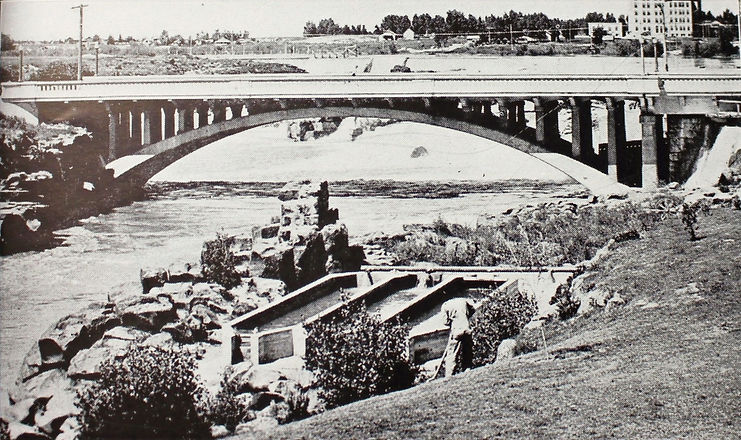IDAHO'S FISH HATCHERIES
The Early History of the People and Places

HAY SPUR FISH HATCHERY OPENS
1907
Located in the heart of the iconic Wood River Valley, Hay Spur is the state's first and longest operating fish hatchery. Some of the original structures are still in use today. Pictured: William N. Stephens, Idaho State Game Warden, responsible for state fish hatchery system development.

WARM RIVER FISH HATCHERY #1
1908
Interior view of the state's second fish hatchery (no longer in operation). This was the first of two hatcheries built on the Warm River in eastern Idaho. Pictured: W.N. Stephens, State Game Warden.

EGG COLLECTION & TRANSPORTATION
1911
Packing trout eggs at a field station for transfer to state fish hatcheries. Note the information on the shipping box.

PARIS (BEAR LAKE) STATION
1918
According to U S Bureau of Fisheries Reports and records, the oldest federal fish station in Idaho was established in 1918 as an auxiliary hatching station for whitefish. Their records also show the facility closed in 1921. (The Paris Station was also referred to at the Bear Lake station).
From the 1917-1918 Seventh Biennial Report 0f Fish and Game Warden of the State of Idaho:
"The United States department of fisheries at Washington has established a government hatchery on Bear Lake in this state for the propagation of whitefish to be distributed in other lakes and streams in Idaho. The hatchery has been very successful and many of the fish have already been transplanted. Our department has given the government officials every possible assistance and I recommend that the same policy of cooperation be carried on in the future. All government enterprise of this character should be given support."

SANDPOINT FISH HATCHERY
1919
Sandpoint Fish Hatchery is located in Bonner County and is the third oldest state hatchery facility built in 1908. This site still in operation, rears multiple species of resident fish for state programs.

HAY SPUR FISH HATCHERY
1922
A hatchery employee feeding the fish along outdoor linear raceways. This is still a common scene at that hatchery almost 100 years later.

HATCHERY INTERIOR
1923
Interior view of a typical hatchery operation in the 1920's and 30's

WARM RIVER HATCHERY #2
1930's or 1940's
This facility, which is no longer in operation, was built outside Ashton, Idaho by the U.S. Bureau of Fisheries in 1938. This was the second hatchery built on Warm River. Some of the original structures can still be seen along the bank of the scenic Warm River.

REARING PONDS IN DOWNTOWN IDAHO FALLS
1930's
These rearing ponds were built in Idaho Falls city park by the Bonneville Sportsmen's Association.

AMERICAN FALLS FISH HATCHERY
1946
In the cold storage room, hatchery staff butcher meat to feed the fish. Many of these cold storage rooms, though no longer used to hold meat, can still be seen at many hatcheries.

HAGERMAN STATE FISH HATCHERY
1957
New concrete raceways (right) replaced the earth lined channels (left) that were fairly common up to that point. Concrete raceways provided significant advantages in fish rearing potential.

EGG COLLECTION
1962
Stolle Meadows - Milt being collected from male Chinook Salmon to fertilize the eggs of a female.
